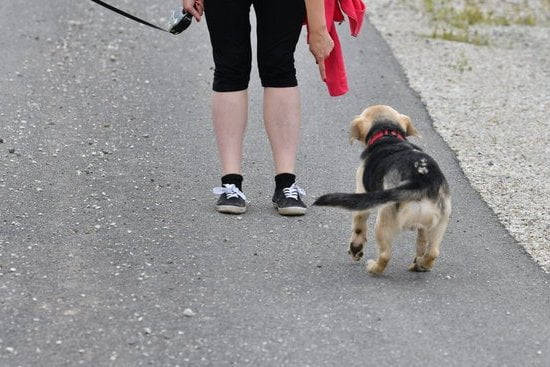How long should you crate train a dog? Crate training is an essential aspect of raising a well-behaved and disciplined canine companion. It provides numerous benefits for both the dog and the owner, making it an invaluable tool in pet training. Understanding the purpose of crate training, recognizing signs that your dog is ready to graduate from the crate, and avoiding common mistakes are crucial components in developing a successful training regimen.
Crate training serves as a safe haven for dogs, giving them a space to call their own and reducing anxiety when left alone. It also aids in housebreaking, as dogs are naturally reluctant to soil their living areas. When introduced properly, crates can become a comfortable and secure place where dogs feel at ease and secure.
In this article, we will delve into all aspects of crate training for dogs, including why it is beneficial, how to introduce a dog to a crate step-by-step, and tips for both puppies and adult dogs. We will also explore the timeframe for crate training and how it varies based on different dog breeds and ages.
By the end of this read, you will have a comprehensive understanding of how long you should crate train your furry friend based on their individual needs and characteristics.
Understanding the Purpose of Crate Training
Creating a Safe Space
One of the main purposes of crate training for dogs is to provide them with a safe and secure space that they can call their own. Dogs are den animals by nature, and a crate can mimic the feeling of a den, giving them a place to retreat when they need some alone time or when they feel anxious.
Aiding in Potty Training
Crate training can also assist in potty training for dogs. Since dogs naturally avoid soiling their sleeping area, a crate can be used to limit the dog’s access to the rest of the house, making it easier to teach them how to control their bladder and bowel movements.
Preventing Destructive Behavior
Crate training can also help prevent destructive behavior while you’re away from home. By confining your dog to a secure space while you’re out, you can avoid coming home to chewed furniture or other household items.
By understanding these purposes of crate training, pet owners can better appreciate its importance in providing structure and security for their canine companions.
Step-by-Step Guide to Introducing a Dog to a Crate
Crate training is an effective way to help your dog feel safe and secure in their own space while also providing you with the peace of mind that they won’t get into any mischief when home alone. However, it’s important to introduce your dog to the crate properly from the start in order for them to see it as a positive environment.
One of the first steps to introducing a dog to a crate is to make sure that the crate is appealing and comfortable for them. To do this, you can place soft bedding such as a blanket or towel inside, along with some of your dog’s favorite toys or treats. This will encourage them to explore and spend time in the crate on their own.
Another important aspect of introducing a dog to a crate is making sure that it’s associated with positive experiences. You can do this by feeding your dog their meals near or inside the crate, as well as giving them treats when they voluntarily go inside. It’s also helpful to allow your dog some alone time in the crate while you’re at home so they become accustomed to being inside without feeling abandoned.
Lastly, patience is key when introducing a dog to a crate. It’s important not to rush the process and allow your dog to become comfortable at their own pace. Forcing them into the crate or using it as punishment can create negative associations and hinder the training process.
| Aspect of Crate Training | Tip |
|---|---|
| Create a comfortable environment | Place soft bedding and favorite toys/treats inside |
| Associate crate with positive experiences | Feed meals near/in the crate, give treats for going inside voluntarily |
| Exercise patience | Avoid rushing, allow dog to become comfortable at their own pace |
Signs That Your Dog Is Ready to Graduate From the Crate
After successfully crate training your dog, it’s important to be able to recognize the signs that indicate your furry friend is ready to graduate from the crate. One of the most obvious signs is when your dog can comfortably hold their bladder for an extended period. This indicates that they have developed better control over their bodily functions and are less likely to have accidents in the house.
Another sign that your dog is ready to move on from crate training is when they no longer display anxiety or stress when left alone in a room without being confined to the crate. If your dog can relax and entertain themselves without causing destruction or displaying signs of distress, it may be time to gradually give them more freedom around the house.
Additionally, if your dog consistently displays good behavior, follows commands, and has become trustworthy in various situations, these are positive indicators that they are ready to graduate from the crate. It’s crucial to monitor and assess your dog’s behavior closely before making this transition. Gradually increasing their freedom while keeping an eye on them will ensure a smooth transition out of the crate.
| Signs Your Dog Is Ready to Graduate | Transition Steps |
|---|---|
| Your dog can hold its bladder for several hours. | Gradually increase freedom at home, starting with short periods. |
| Your dog remains calm when left alone outside of the crate. | Supervise them during initial periods of freedom and provide engaging activities. |
| Your dog consistently displays good behavior and follows commands. | Ensure a predictable routine for feeding, walks, and playtime. |
Common Mistakes to Avoid When Crate Training a Dog
When crate training a dog, it’s important to avoid certain common mistakes that can hinder the process and cause distress for your furry friend. By being aware of these potential pitfalls, you can set your dog up for success and make the crate training experience as positive as possible.
Using the Crate as Punishment
One of the most common mistakes people make when crate training their dog is using the crate as a form of punishment. The crate should be a safe and comfortable space for your dog, not a place they associate with negative experiences. Using the crate as punishment can create anxiety and fear around it, making it much more difficult to successfully train your dog to enjoy spending time in their crate.
Leaving Your Dog in the Crate for Too Long
Another mistake to avoid is leaving your dog in the crate for extended periods of time. While crates can be useful tools for managing a dog’s behavior, they should not be used as a way to confine your dog for hours on end. Doing so can lead to physical discomfort, increased anxiety, and other negative effects on your dog’s well-being.
Skipping the Gradual Introduction Process
A common mistake many pet owners make is skipping the gradual introduction process when first introducing their dog to the crate. It’s important to take the time to properly acclimate your dog to the crate, starting with short periods of time and gradually increasing the duration as they become more comfortable. Skipping this step can result in aversion or resistance to being inside the crate.
By avoiding these common mistakes when crate training your dog, you can ensure that the process goes smoothly and that your dog develops positive associations with their crate. Remember that patience, consistency, and positive reinforcement are key components of successful crate training.
How Long Should You Crate Train a Dog?
Crate training is a valuable tool for dog owners who want to provide a safe and comfortable space for their pets. However, determining how long to crate train a dog can be a common concern for many pet owners. Each dog is unique, so the length of time required for crate training will vary depending on various factors such as age, breed, and individual needs.
When considering how long to crate train a dog, it’s important to remember that the ultimate goal is to gradually decrease reliance on the crate as the dog becomes more accustomed to living in your home. According to experts, the duration of crate training can vary from several weeks to several months depending on your dog’s particular circumstances.
During the initial stages of crate training, it’s helpful to create a schedule that gradually introduces your dog to spending time in the crate and gradually increases their independence. Here are some general guidelines to consider when determining how long you should crate train your dog:
- Slowly increase the time spent in the crate over several weeks
- Monitor your dog’s comfort level and behavior while in the crate
- Gradually provide more freedom outside of the crate as your dog becomes more comfortable with their surroundings
As each dog is unique and has individual needs, there is no one-size-fits-all answer to how long you should crate train your pet. It’s important for pet owners to take into account their dog’s specific circumstances and make adjustments based on their progress and comfort level.
Adjusting Crate Training Timeframes for Different Dog Breeds and Ages
When it comes to crate training a dog, it’s important to consider the specific needs and characteristics of different dog breeds and ages. Not all dogs will respond the same way to crate training, so adjusting the timeframe for each breed and age group is crucial for successful training outcomes. Here are some guidelines for adjusting crate training timeframes:
- Toy Breeds (e.g. Chihuahua, Yorkshire Terrier): Toy breeds are generally smaller in size and may not have as much bladder control as larger breeds. When crate training a toy breed, it’s important to start with shorter increments of time in the crate, such as 15-30 minutes, gradually increasing the time as they become more comfortable.
- Medium-Size Breeds (e.g. Beagle, Bulldog): Medium-size breeds may have moderate bladder control compared to toy breeds. Start with 30-60 minutes in the crate and gradually increase the time as your dog adjusts.
- Large Breeds (e.g. Labrador Retriever, German Shepherd): Larger breeds typically have better bladder control and can hold their bladder for longer periods. You can begin crate training large breeds with 1-2 hours in the crate, gradually extending the time based on their comfort level.
In addition to considering different dog breeds, it’s also essential to adjust crate training timeframes based on the age of the dog:
- Puppies: Puppies have less bladder control and may need to be taken out more frequently. For younger puppies (8-10 weeks old), start with short intervals of 30-60 minutes in the crate. As they grow older, you can gradually increase the time between potty breaks.
- Adult Dogs: Adult dogs generally have better bladder control and can hold their urine for longer periods. You can begin crate training adult dogs with longer intervals of 4-6 hours in the crate, providing regular potty breaks and opportunities for exercise.
By understanding the specific needs of different dog breeds and ages, you can tailor your approach to crate training for optimal results while keeping your pet safe and comfortable throughout the process.
Crate Training Tips for Puppies vs Adult Dogs
In conclusion, crate training can be a valuable tool for both puppies and adult dogs when done correctly. The benefits of crate training, such as providing a safe space for the dog and aiding in potty training, make it a worthwhile investment of time and effort. Understanding the purpose of crate training and following a step-by-step guide can help make the process smoother and more effective.
It’s important to pay attention to your dog’s behavior and signals to determine when they are ready to graduate from the crate. Signs of readiness may include increased confidence, improved bladder control, and decreased anxiety when left alone. Gradually extending the time spent out of the crate can help ease the transition.
When considering how long to crate train a dog, factors such as breed, age, and individual needs should be taken into account. While there is no one-size-fits-all answer, adjusting crate training timeframes based on these considerations can help ensure that the process is appropriate for each specific dog.
Whether working with a puppy or an adult dog, following the tips outlined for each stage can lead to successful crate training and long-term benefits for both you and your furry companion.
Frequently Asked Questions
When Should I Stop Crate Training My Dog?
Deciding when to stop crate training your dog depends on your dog’s behavior and comfort level. Some dogs may quickly adapt to being left alone without the crate, while others may need more time.
Signs that it may be time to stop crate training include your dog being able to settle down and relax outside of the crate, not destroying furniture or belongings, and not having accidents in the house.
How Long Should It Take to Crate Train a Dog?
The length of time it takes to crate train a dog can vary depending on the individual dog. Some dogs may become comfortable with the crate within a few days, while others may take several weeks. It’s important to be patient and consistent with the training process, using positive reinforcement to create a positive association with the crate.
When Can I Transition My Dog Out of His Crate?
Transitioning your dog out of his crate should be done gradually and based on your dog’s behavior and readiness. Once your dog is consistently showing calm behavior outside of the crate, not having accidents in the house, and not causing damage to household items, you can start by leaving him out of the crate for short periods of time while you are home.
Slowly increase these periods until you feel comfortable leaving your dog out of the crate when you are away from home. Always monitor your dog’s behavior during this transition period.

Welcome to the blog! I am a professional dog trainer and have been working with dogs for many years. In this blog, I will be discussing various topics related to dog training, including tips, tricks, and advice. I hope you find this information helpful and informative. Thanks for reading!





